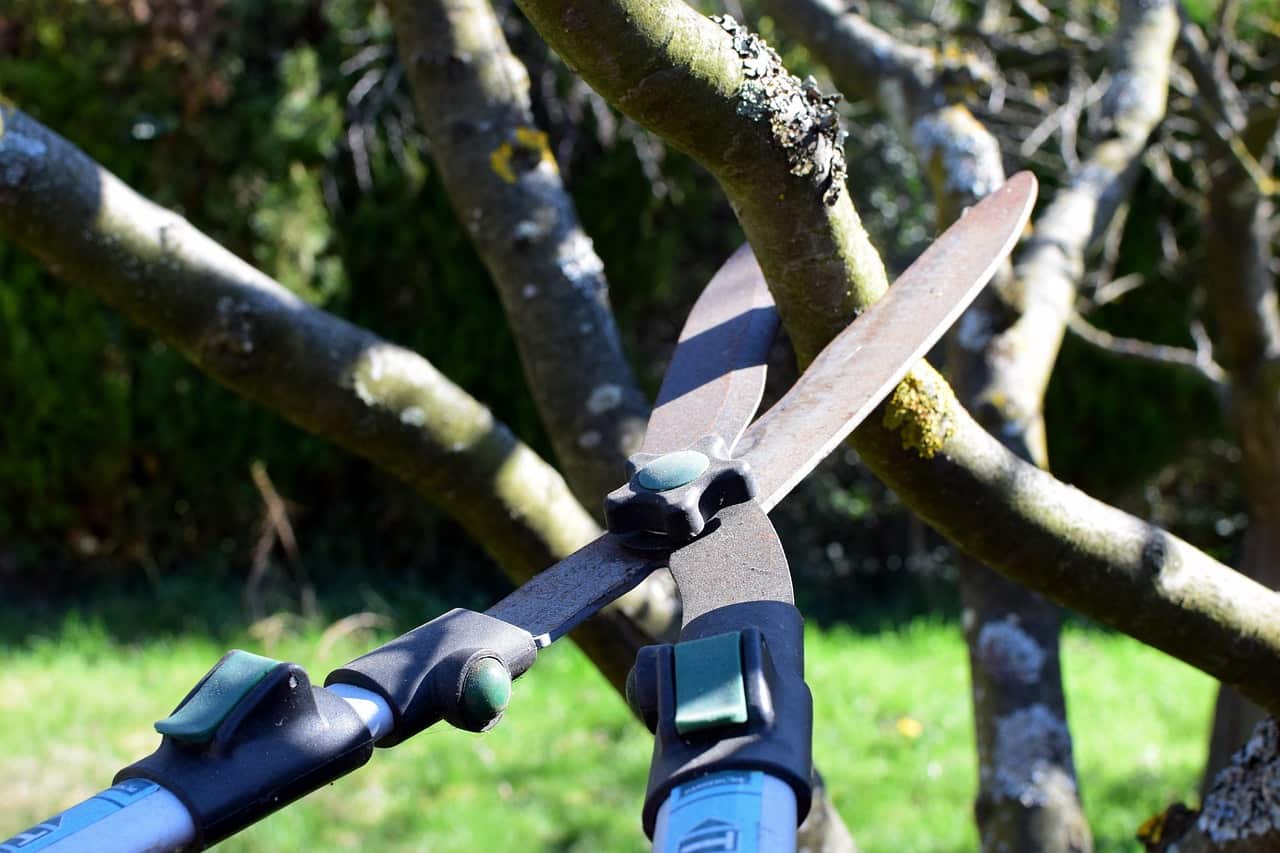Trees are valuable assets to any property, providing shade, beauty, and environmental benefits. However, like any living organism, trees require proper care to thrive.
Regular tree trimming and pruning are essential maintenance practices that offer numerous advantages for both the trees and property owners.
Let’s explore the twelve key benefits of keeping your trees well-maintained through proper trimming and pruning.
Enhanced Tree Health
Maintaining trees through regular pruning is one of the most effective ways to promote healthy tree growth.
When arborists remove dead or diseased branches, they prevent disease spread in trees and allow the plant to direct its energy toward developing healthy tissue. This process reduces tree stress significantly, as the tree no longer needs to support compromised limbs.
Professional pruning also enhances root development by creating a better balance between the crown and root system.
When the canopy is properly thinned, the tree can allocate more resources to strengthening its foundation, leading to better overall health and stability.
Enhanced Aesthetics
Trees contribute significantly to the beauty of any landscape, and regular trimming helps maintain tree aesthetics by creating balanced, visually pleasing shapes.
Proper pruning defines garden design by highlighting the natural form of trees while keeping them in proportion with surrounding elements.
This attention to detail shapes trees for symmetry, creating a more harmonious landscape that enhances curb appeal and increases property value.
Improved Appearance
Beyond basic aesthetics, professional tree trimming keeps trees looking tidy and well-cared for. This meticulous maintenance highlights focal points in landscaping, allowing specimen trees to stand out while ensuring others blend appropriately into the background.
By controlling tree size and shape, property owners can ensure their trees complement rather than overwhelm the landscape.
Regular trimming is particularly important for flowering trees, as it promotes flowering and fruiting by removing competing growth and allowing more energy to be directed toward bloom production.
The result is a landscape that looks intentional and thoughtfully designed rather than overgrown and neglected.
Safety First
Perhaps the most crucial benefit of regular tree maintenance is the elimination of hazardous limbs that could potentially cause injury or property damage.
Professional pruning prevents falling branches, significantly reducing storm damage risk when severe weather strikes.
Tree trimming also clears utility line obstructions, preventing dangerous situations involving power lines. This proactive approach increases property safety and enhances safety for pedestrians walking beneath trees.
Additionally, properly maintained trees improve visibility for drivers on roadways adjacent to landscaped areas, preventing accidents caused by obstructed sightlines.
Sunlight Penetration
When trees become overgrown, their dense canopies can block sunlight from reaching gardens, lawns, and even the interior spaces of homes.
Strategic trimming allows more sunlight to filter through the branches, creating a healthier environment for plants growing beneath trees.
This improved light penetration is especially beneficial for landscapes with multiple levels of plantings.
Sunlight reaching the ground encourages diversity in garden plants and helps maintain a lush lawn, even in areas that would otherwise be too shaded for healthy growth.
Improves Airflow
One often overlooked benefit of proper tree trimming is how it improves air circulation in canopy. Dense, unpruned trees can create stagnant air pockets that trap moisture and create ideal conditions for fungal growth and pest infestations.
By selectively removing branches, professional tree care specialists create pathways for air to move freely through the tree’s structure.
This improved ventilation minimizes pest infestations by creating less hospitable conditions for insects that thrive in damp, still environments.
Better airflow also helps trees dry more quickly after rain, reducing the likelihood of fungal diseases taking hold.
Increased Fruit Production
Proper pruning techniques are essential for maximizing harvest for fruit-bearing trees. More energy is directed toward fruit development rather than excessive foliage by strategically removing unproductive branches.
This not only increases yield but often improves the quality of fruit as well. Regular trimming also makes harvest easier and safer by keeping fruit-bearing branches at accessible heights.
Additionally, removing dense interior growth allows fruit to receive adequate sunlight for ripening and creates space for proper spray application when needed to control pests or diseases.
Preventative Maintenance
Proactive tree care through regular trimming and pruning helps detect early tree problems before they become serious.
This preventative approach reduces future maintenance costs by addressing minor issues before they require major interventions.
Regular inspections during pruning can identify signs of disease, pest activity, or structural weaknesses that might otherwise go unnoticed until they cause significant damage.
This early detection prevents emergency tree services that are typically more expensive and disruptive than scheduled maintenance.
Promotes New Growth
Strategic pruning stimulates new growth by encouraging trees to develop fresh shoots and branches. This rejuvenation process is particularly beneficial for older trees that might have become stagnant in their growth patterns.
As new growth emerges, trees become fuller and more vigorous. Professional arborists understand exactly how and when to prune different species to stimulate optimal growth responses.
This expertise ensures that trimming promotes strong tree structure rather than weak, unsustainable shoots that could create problems down the line.
Disease Prevention
One of the most valuable aspects of regular tree maintenance is its role in disease prevention. By removing dead or infected branches promptly, arborists can halt the spread of many common tree diseases before they affect the entire plant.
Professional pruning also creates conditions that discourage disease development. Proper thinning techniques improve air circulation and sunlight penetration, creating an environment less favorable to many pathogens.
Additionally, regular inspection during pruning allows for early identification of disease symptoms, enabling prompt treatment when necessary.
Environmental Benefits
Well-maintained trees provide significant environmental advantages for communities. They boost local ecosystem health by providing habitat for wildlife while contributing to improved air quality through carbon sequestration and filtering of pollutants.
Properly pruned trees are more effective at reducing the urban heat island effect than overgrown specimens, as they provide optimal shade while allowing for beneficial air movement.
This strategic shading improves energy efficiency for nearby buildings by reducing cooling costs during summer months.
Additionally, well-maintained trees support climate resilience by being better equipped to withstand severe weather events.
This sustainable approach to urban forestry encourages community engagement with nature and promotes responsible tree stewardship.
Extends Tree Lifespan
Perhaps most importantly, regular professional trimming and pruning significantly increase tree lifespan.
By removing structural defects before they compromise the tree’s integrity, arborists help trees develop strong, resilient frameworks that can withstand decades of environmental stresses.
This long-term tree stability translates to numerous benefits for property owners, including averting costly liabilities associated with tree failures and saving money on property repairs that might otherwise be needed due to damage from falling limbs or roots.
Conclusion
Regular tree trimming and pruning represent an investment in both the health of your landscape and the value of your property.
By supporting eco-friendly landscape care practices through proper tree maintenance, property owners can enjoy safer, more beautiful surroundings while contributing positively to their local environment.
Professional arborists bring the expertise needed to properly care for trees, ensuring that each cut serves a specific purpose in promoting tree health, safety, and aesthetics. With consistent maintenance, trees become valuable, long-lived assets that enhance neighborhoods and provide benefits for generations to come.

